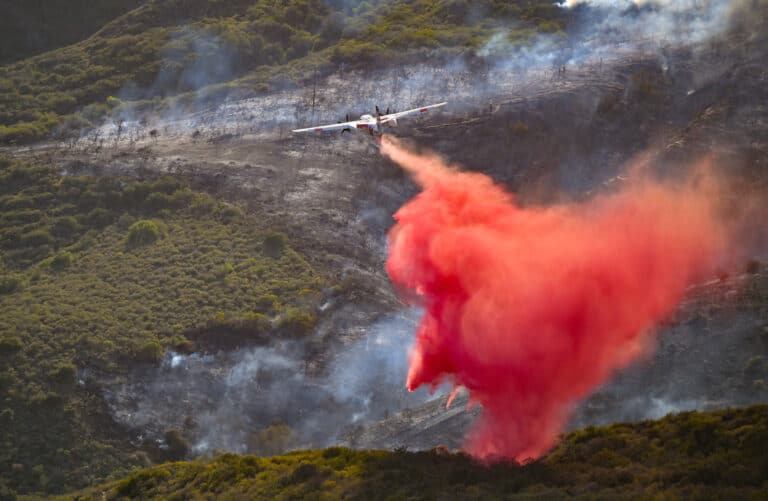Photo: Firefighters drop retardant over Aliso Canyon during the Coastal Fire in Laguna Niguel, California, on May 11, 2022. Jeff Gritchen/Orange County Register via Getty Images
A lawsuit could change how the Forest Service fights fires.
On a hot, dry August day in 2002, air tankers swooped over a small wildfire south of Bend, Oregon. The Forest Service hoped to suppress the flames by dropping over a thousand pounds of fire retardant on and around the fire — but the pilots missed. Instead, the neon-red liquid cascadedinto the nearby Fall River, a tributary of the Deschutes. Soon after, at least 22,000 trout died — virtually all the fish living in a six-mile stretch.
Retardant contains ammonium phosphate, which is highly toxic to fish and other aquatic life. In the years following the accident, Forest Service Employees for Environmental Ethics (FSEEE), a Eugene, Oregon-based nonprofit that represents former and current Forest Service employees, has called for policy changes regarding the use of retardant. The group has won two lawsuits against the Forest Service restricting its use and is now suing the agency over employing it in and around streams and creeks. The suit has reignited debates over retardant’s firefighting efficacy, and the outcome could change how it is used in the future.
In a suit filed in Montana’s Federal District Court last October, FSEEE argued that fire retardant is a pollutant, so the Forest Service needs […]
Full article: www.hcn.org

